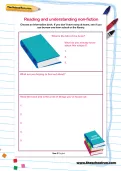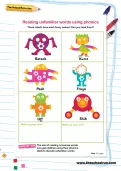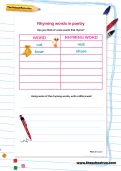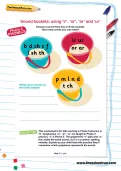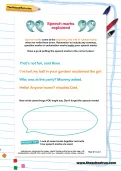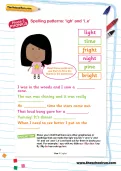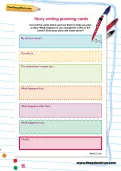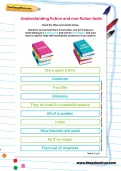Worksheet finder
Search critera
Putting names in alphabetical order
Write the name of one of your friends or someone in your family in each box, and draw a portrait of them. Can you cut the boxes out and put portraits in alphabetical order?
Reading and understanding non-fiction
Choose an information book. If you don’t have many at home, see if you can borrow one from school or the library. What is the title of the book? What are you hoping to find out about? What do you already know about this subject? Read the book and write a list of things you’ve found out:
Reading unfamiliar words using phonics
A KS1 worksheet of nonsense words, based on the National Curriculum and created by a phonics expert to get Year 1 children using their phonics skills to decode unfamiliar words.
These robots have such funny names! Can you read them?
These robots have such funny names! Can you read them?
Rhyming words in poetry
Can you think of some words that rhyme? Write them down here then use some of them to write a little poem!
Sound buckets: using ‘ir’, ‘or’, ‘ar’ and ‘ur’ (Phase 5 phonics)
Choose a sound from two or three of the buckets and see how many words you can make.
Speech marks explained
Speech marks come at the beginning and end of spoken words when we write them down. Remember to include any commas, question marks or exclamation marks inside your speech marks. Have a go at putting the speech marks in the correct place in these sentences. Then write some things YOU might say. Don’t forget the speech marks!
Spelling patterns: 'igh' and 'i_e' (Phase 5 phonics)
Read these words and use them to fill in the blanks in the sentences. We are practising spelling words with 'igh' and 'i_e'.
Story writing planning cards
Cut out the cards below and use them to help you plan a story. What happens if you change the order of the cards? Does your story still make sense?
Their or there?
The two different ways of spelling this word are for two different meanings. If you’re talking about the place there it’s THERE. If it’s something belonging to someone (e.g. their house) it’s THEIR. Remember the difference by thinking there has the word 'here' in it. See if you can put the correct spelling of their/ there into these sentences.
Understanding fiction and non-fiction texts
Read these titles and words. Cut them out and put them in two piles, one for things you think belong in a fiction book and one for non-fiction. Ask your mum or dad for help with reading the sentences if you need to.

